
- Introduction
- Actualites(video)
- Bombardopolis
- Preface
- Chapter 1
- Chapter 2
- Chapter 3
- Chapter 4
- Conclusion
- Epilogue
- Archives
- Liens
- Contact
CHAPTER III
WESTERN RELIGION VERSUS THE BLACKS
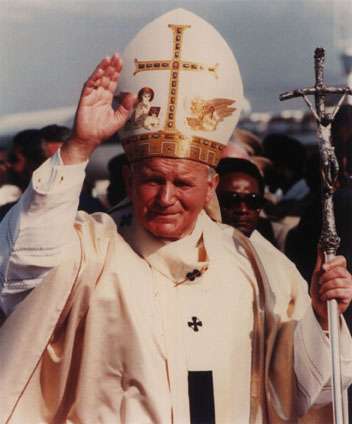
In the previous chapter, we saw the extent to which the West dominates the Black World. As we will see in this chapter, there has been an attempt to justify this domination by devaluing the Black world. Even religion is used for this purpose, as I point out in this letter to Pope John Paul II.
LETTER TO POPE JOHN PAUL II
Montreal, February 28, 1983
His Holiness Pope John Paul II
Vatican City
Rome
Italy
Most Holy Father:
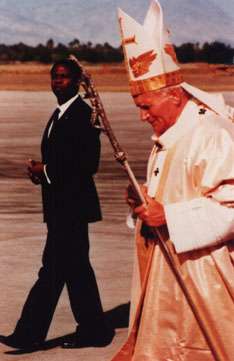
I would like to entrust my message to Your Holiness to Divine Providence, which uses messages and messengers according to Its praiseworthy desires.
In January 1979, while you were in Santo Domingo (the West Indies) on your way to Mexico City, I did all I could to make sure that you received a letter and a few documents. The reason why I now wish to inform you of the contents of that letter is that it may not have reached you since postal service is slow in developing countries and you were on your way back to Rome.
Various political comments were issued when the news of your trip to Haiti, scheduled for March 9, 1983, was published. It leads people to reflect on the vast, ever-present aspect of the relations between the West and the Black world: anti-Black prejudices in Christianity and Science.

This is a real scourge of human relationships. Consider racial conflicts in the United States, for instance, and the longevity of the apartheid regime in South Africa, on the international level. Anti-Black racism is best known in the form of prejudice against Blacks.

Even though the visible part of the iceberg is obvious to everyone, the other, less visible but basically more important, part keeps on regulating life between people and between nations. That constitutes — as many people are aware — a heavy handicap on scientific progress in the West.
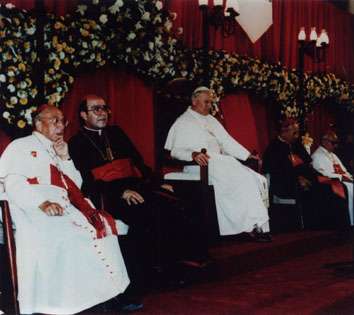
Even though anti-Black prejudice in the Western world dates back to the pre-Christian era, it is still true that, through certain practices and interpretations common in the West, Christianity has maintained and promoted it. A French scholar, Roger Bastide, gives us a very good demonstration of that in one of his studies, the work he presented at the Conference on Race and Color in Copenhagen in 1965.1
According to Bastide, Christianity contains within itself a certain “color” symbolism. That symbolism, which spread through a state of mind which it shaped even in individuals who claim to be detached from religion, when they are really detached from churches and their dogmas, has had a ripple effect which is very hard to put a stop to.
1. Bastide, Roger: “Color, Racism, and Christianity”
(unpublished text of an address given at the 1965
Conference on Race and Color, in Copenhagen, Denmark)
Bastide also states that there is infinitely more in anti-Black racism than the effect of that symbolism: more specifically, it has economic roots. He explains: “When some Christians wanted to justify slavery by explaining that the blackness of the skin was a punishment inflicted by God — the curse on Cain (the murderer of his brother), the curse on Ham (Noah’s son), who uncovered his father’s nakedness — they were using the symbolism of `blackness’, but beyond that symbolism, they were inventing ethological tales destined to justify in their own eyes a system of production based on the exploitation of black workers imported from Africa.” [our translation]
Bastide also writes:
“The great Christian dichotomy is the one between black and white. White is supposed to express purity and black, evil. That means the opposition of Christ and Satan, spiritual and carnal life, good and evil, which finally amounts to that opposition between whiteness and blackness which supersedes all the others. Even for the blind person who knows nothing but night’s darkness, words uttered or heard suffice to create the dance of devils, as they do for the sighted: “a black soul”, “the blackness of an action”, “dark deeds”, “the innocent whiteness of the lily”, “the candor of a child”, “to whitewash a crime”, etc.”
These are not just nouns and adjectives. Whiteness refers to light, the ascension into lightness, to untouched, immaculate snow, to the flight of the Holy Ghost’s doves, to clear transparency, while blackness remains the landscape of Hell, the color of the devil, the bowels of the earth, infernal lava.
That dichotomy is so imperious that it may drag other colors behind it: celestial blue, simple satellite of the white, the coat of the sinless Virgin, the red characterizing flames of hell, in turn transforming itself into a sort of dark doublet of the black.
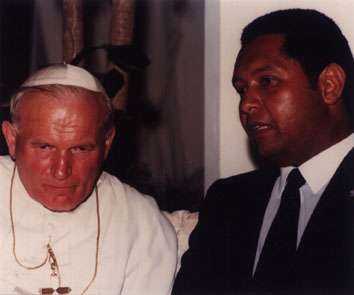
This word-idea association functions automatically, since our thought process is so enslaved to our language, whenever a white man is in contact with a black man.
Mario de Andrade justly denounced the evil effects of that Christian symbolism, found at the source of color prejudice.
In America, when a Negro is accepted, in order to separate him from the rest of his race, people say, “He’s black all right, but he has a white soul.” [our translation]
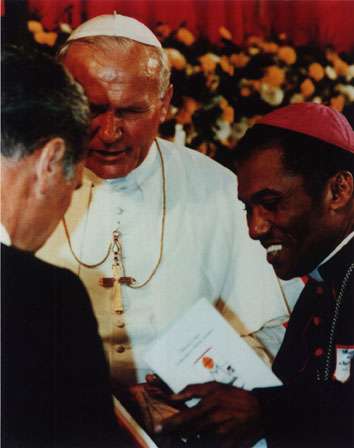
The fatal consequences of the anti-Black prejudices spread by so-called Christian civilization have been clearly demonstrated on the socio-political level: slavery, racial conflict, apartheid, etc. And the harmful, even lethal, character of those prejudices is such that even the scientific realm, which one would have believed to be immune to the contamination, does not seem to have been spared.
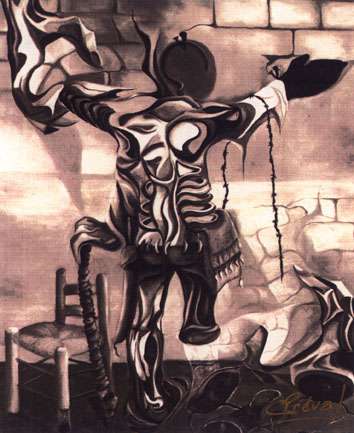
“Racial segregation against Blacks is rooted, beyond all historical or economic factors, in the idea of the contagious nature of a diabolical color.” [our translation]

That remark by Roger Bastide appears even more clearly in the realmof the so-called exact sciences, such as optics.
Indeed, as soon as we start studying that branch of science, which has to do with light in all its aspects, we are faced with ambiguities, vagueness, doubtful, fanciful, or even contradictory interpretations.
The concept of “color” that stems fromscientific experimentation is based on the demonstration in 1665 by the well-known English scholar Isaac Newton.
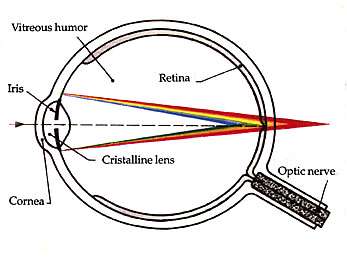
This experiment consists in running a visible light ray called “white light” through a prism in a dark room, breaking down that light into a continuous spectrum encompassing all the colors. It is not difficult to discover that such an experiment and its consequences are far from being scientific or conclusive
It is well known that Johann Wolfgang von Goethe (the great German writer and remarkable scholar) disagreed with Newton on this matter. In 1791, when he was 42 years old, Goethe wrote his “Contribution to Optics”, the first in a series of studies which climaxed with the publication of the “Theory of Colors” and “Materials for the History of Color Theory”, printed between 1805 and 1810. The whole of Goethe’s work on colors is concentrated on a stubborn battle against what he calls “Newton’s error”.
In 1827, he denounced the professors who continued to expound the illustrious physicist’s theory, because — to quote Goethe himself — “they owe their existence to that error”. [our translation]
Even today, Professor Carl Sagan, a well-known scientific commentator and NASA scholar, talks and writes on the subject. One of the subjects in which he is an expert, exobiology, allows him to scrutinize the darkest clouds in the universe where DNA — which is necessary to all forms of life — may be found. According to Dr. Sagan, the darkness of space jealously hides incredible resources which would be beneficial to science. In state-of-the-art research (in astrophysics, for example), he finds a set of anti-Black prejudices that, in his opinion, represent brakes on the pursuit of new discoveries in the Space Age.
He said:
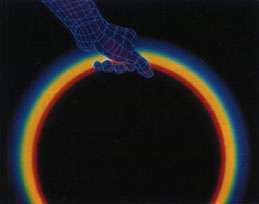 “After Apollo, scientists were discouraged. Do you know why they were disheartened? Because the sky above the Moon is black. That made them depressed. Do you think this is a joke? Not at all. Scientists are more fragile than they look. But the sky on Mars is rose-colored. That gave them hope.”2
“After Apollo, scientists were discouraged. Do you know why they were disheartened? Because the sky above the Moon is black. That made them depressed. Do you think this is a joke? Not at all. Scientists are more fragile than they look. But the sky on Mars is rose-colored. That gave them hope.”2
2. Delaprée, Catherine,
“Vikings Key Man. And now, everything must be reviewed…”,
Le Point, No. 204, August 16, 1976, pp. 48–49 [our translation].)
The reality born of those color prejudices comes directly from the very notion of “light”, as weknowit today. We know that Newton tried to demonstrate that white light is broken down by the prism into a series of seven refracted rays which produce the colors from red to violet on the screen on which they are projected. According to Newton, white light contains various lights, each one of which is darker than the white light itself and each of which is part of the whole. And the darkest of all (real blackness) is simply an absence of light.
Goethe, as stated before, opposed that concept: “That transparent lightness which shows itself in darkness is the proof of the law according to which light is nothing else than a mixture of white light and darkness, assuming different degrees,” he wrote in 1826 [our translation].
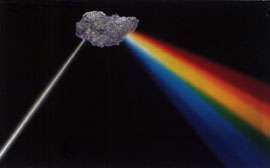 Sowhat is light, if not the effect of a cause? In physics, it is the result of the universal Law of Conservation of Matter and Energy. In one form or another, light is measurable. “With the invention of new techniques, both on the ground and in space, one can measure the luminosity of celestial bodies in practically the whole electromagnetic spectrum, from radio waves to gamma rays, through infrared, ultraviolet and X-rays…”. That is what two scientists, Trinh Xuan Thuan and Thierry Montmerle, wrote in a recent study on the invisible mass of the universe.3
Sowhat is light, if not the effect of a cause? In physics, it is the result of the universal Law of Conservation of Matter and Energy. In one form or another, light is measurable. “With the invention of new techniques, both on the ground and in space, one can measure the luminosity of celestial bodies in practically the whole electromagnetic spectrum, from radio waves to gamma rays, through infrared, ultraviolet and X-rays…”. That is what two scientists, Trinh Xuan Thuan and Thierry Montmerle, wrote in a recent study on the invisible mass of the universe.3
From the point of view of optics, light is both visible and invisible, just like the universe. These matters tend to be expressed in very scientific and sophisticated terms that few people other than scientists understand. In everyday language, the common interpretation leads us to the prism — indeed, everything already seems to be settled by being La masse invisible de l’univers, reflected through a prism.
3 La masse invisible de l’univers.
(The Invisible Mass of the Univers), La Recherche, No. 139, December 1982, p. 1438.
Trinh Xuan Thuan and Thierry Montmerle :
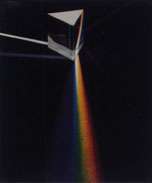
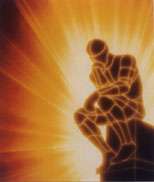
But the prism is a neutral agent, without prejudices, just like a computer whose software is objective. Let us now take a closer look at the prism. In the dark room in Newton’s experiment, the prism receives darkness from one angle and a beam of white light from the other. The prism puts those two elements into action. The incident light ray is transformed, softened under the effect of the surrounding shade. Acting as a wave mixer, the prism integrates the white light and the darkness. It synthesizes them in vitro, based on a given degree in the well-known “Gray scale” used in photography and color television. Under the effect of the incident ray, which acts like a projector, the refracted, very subtle gray ray passes through the prism. The continuous spectrum of all the colors is formed in a “quasi-black” room on a “quasi-white” screen, given that the spectrum was born of both white light and darkness.
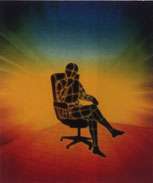
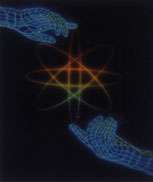
In the same way, the surplus white light which was not used in the demonstration is found in a diffuse form, mixed with the darkness of the room. Today, that “transparent lightness” intuitively sensed by Goethe is known to scientists as “luminosity”. It is a measurable quantity.
Three hundred years have gone by. Today one of the greatest physicists and mathematicians in the world, Professor Stephen Hawking, who, now a days, occupies the chair once occupied by Isaac Newton at Cambridge University, states that the universe contains materials that have not yet been identified. He calls these unknown elements “Dark Matter”. He believes that this “Invisible Matter” is 90 to 99 times more abundant in the universe than any other known kind of matter.
Goethe fought, and rightly so, against those who owe their very existence to error. He meant the professors who continued to expound the famous physicist’s non impartial theory. We should add, in Isaac Newton’s defence, that to err is human, and scientific truth can never be fully revealed.
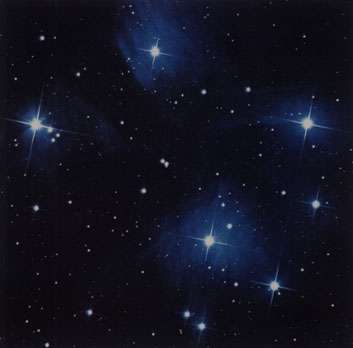 So we must bear in mind the universal Law of Conservation of Matter and Energy: “Nothing is created, nothing is destroyed, everything is transformed.” Error, sooner or later, is sure to be amended or given up; scientific truth (a very relative notion) has no alternative but to readjust itself. The disastrous effects of certain religious practices must be eliminated and negative attitudes in scientific research should disappear as optics allies itself with the laws of energy physics, whose experimental material is found both in laboratories on Earth as well as in space and in the stars.
So we must bear in mind the universal Law of Conservation of Matter and Energy: “Nothing is created, nothing is destroyed, everything is transformed.” Error, sooner or later, is sure to be amended or given up; scientific truth (a very relative notion) has no alternative but to readjust itself. The disastrous effects of certain religious practices must be eliminated and negative attitudes in scientific research should disappear as optics allies itself with the laws of energy physics, whose experimental material is found both in laboratories on Earth as well as in space and in the stars.
“That dark lightness which falls from the stars” suggests that today we must redefine the word light”.
 “On the cosmic scale as on the terrestrial scale, blackness is an integral sine qua non part of color and light process.”
“On the cosmic scale as on the terrestrial scale, blackness is an integral sine qua non part of color and light process.”
Once again, I implore you to give me your fatherly blessing.
Lucien Bonnet
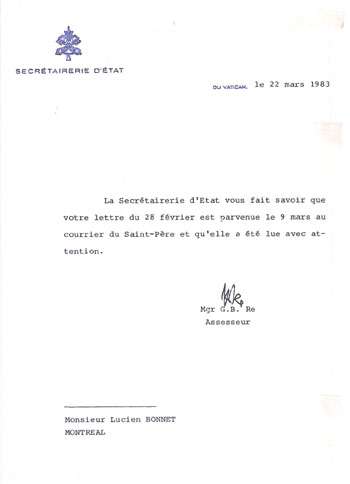
Secretariat of State of the Vatican
March 22, 1983
The Secretariat of State advises you that your letter dated February 28 was
received at the Holy Father’s mailroom on March 9 and has been read with care.
Mgr. J.B. Re
Assessor.
Mr. Lucien Bonnet
Montreal

